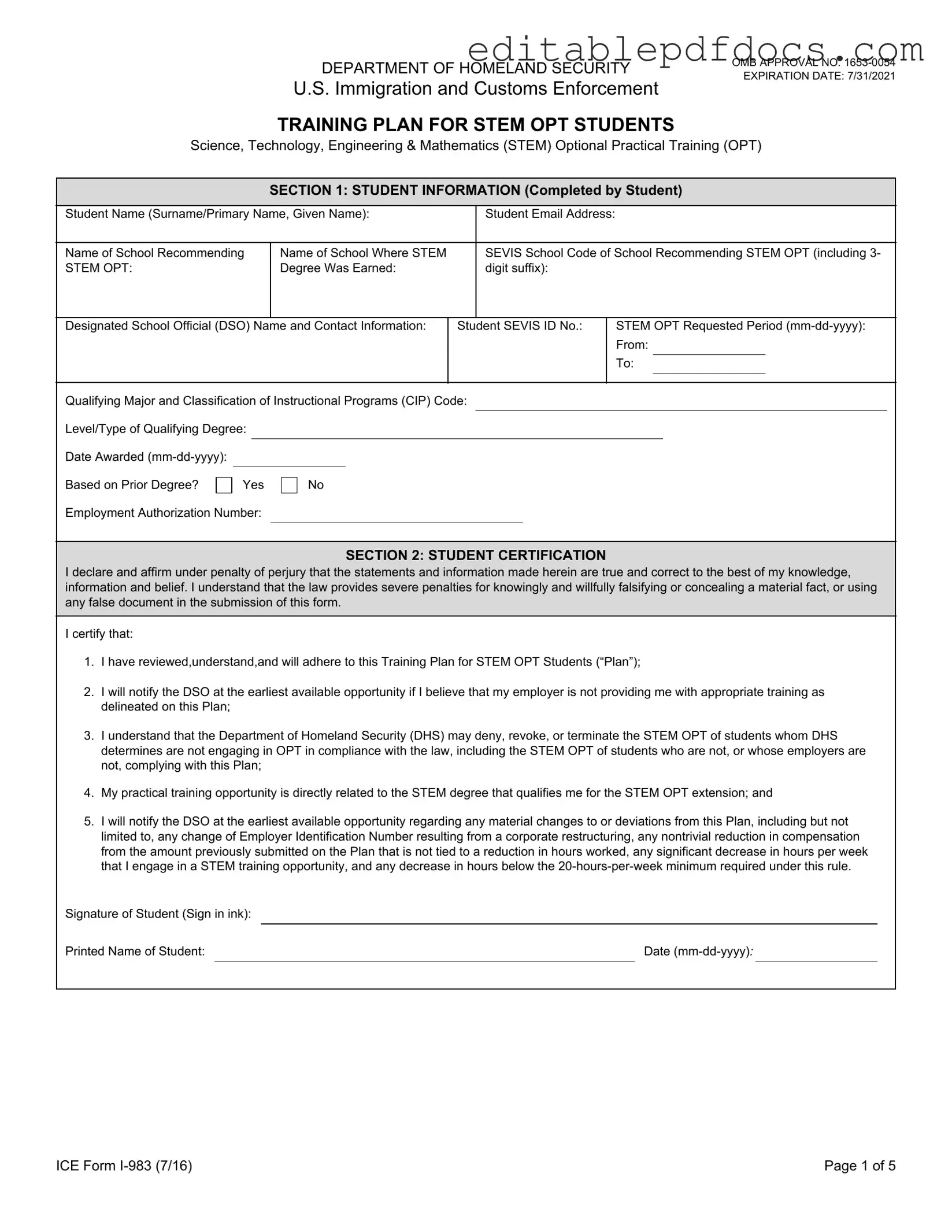When completing the ICE I-983 form, individuals often overlook critical details that can lead to delays or complications in their application process. One common mistake is failing to provide accurate and complete information in the personal details section. This includes not only names and addresses but also ensuring that all data matches official documents.
Another frequent error is neglecting to include a clear description of the training program. Applicants sometimes provide vague or incomplete descriptions, which can hinder the evaluation of the training's relevance to their field of study. A well-defined training program helps demonstrate how the experience aligns with educational goals.
Many individuals also forget to include a comprehensive assessment of the training objectives. This section requires a detailed outline of what the participant hopes to achieve during the training period. A lack of specificity may result in questions from the reviewing agency.
In addition, individuals may fail to identify the appropriate employer's responsibilities in the form. Employers must understand their role in the training process and how they will support the participant. Omitting this information can lead to misunderstandings and compliance issues.
Another mistake is not providing a clear plan for evaluating the training experience. Applicants should outline how they will assess their progress and the effectiveness of the training. Without this plan, it may be difficult to demonstrate the value of the training to the reviewing body.
Some individuals do not ensure that all required signatures are obtained. The I-983 form requires signatures from both the participant and the employer. Missing signatures can result in immediate rejection of the application.
Additionally, applicants sometimes submit the form without reviewing it for errors. Simple typographical errors or inconsistencies can lead to complications. A thorough review can prevent unnecessary delays in processing.
People often underestimate the importance of adhering to deadlines. Submitting the I-983 form late can have serious consequences, including the potential loss of training opportunities. Staying organized and aware of timelines is crucial.
Lastly, individuals may not seek guidance when needed. The process can be complex, and consulting with a knowledgeable advisor or legal expert can help clarify requirements and improve the chances of a successful application.
